
English Instructional Plan – Segmenting and Blending K-1
- Subject:
- Communication and Multimodal Literacy
- English
- Reading
- Material Type:
- Lesson Plan
- Author:
- VDOE Project Team
- Date Added:
- 04/13/2022

English Instructional Plan – Segmenting and Blending K-1

The focus of this episode is to work through exploring the various emotions a child may experience throughout the day, what those feel like, and different positive ways of handling each emotion.

This resource presents ideas for a senior scrapbook that students can build throughout the year as they complete various assignments, most of which are writing assignments. The resource presents language designed to be given to students that teachers can adjust as they pick and choose from the various assignments they would like to do.

Ever wonder why doors open when we enter the grocery store or what triggers those codes in car dashboards? All of these things are rEnglishted to sensors. In computer science, sensors detect external data usually in the form of motion, temperature, proximity, sound, and other forms and input the data into the computer system to perform a task. Sensors are everywhere–in our smartphones, touchscreens, Echo Dots, refrigerators, HVAC systems, smoke detectors, and security systems. In this lesson, students will learn about different types of sensors they see all around them and what task they perform. They will also read the biographical account of a boy who rescued his village from famine and drought by inventing something that worked similar to a sensor in The Boy Who Harnessed the Wind. As students read, they will also observe the “sensory language” used in the story in the form of figurative language (similes, metaphors, and personification). Students will then read passages of their own to identify the forms of figurative language found in passages to “help” the main character make his sensor work.
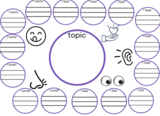
This graphic organizer will help students think about sensory details as it relates to a choosen topic. For example, if the topic is a haunted house, what do you smell in a haunted house? What do you feel? What do you see? What do you hear?

English Instructional Plan Setting and Plot 7
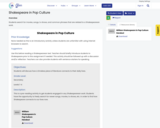
Students search for movies, songs, tv shows, and common phrases that are related to a Shakespearean work.

A leveled assessment to pair with Shakespeare's Macbeth: Fear and the Motives of Evil fro the National Endowment for the Humanities
Retrieved from https://edsitement.neh.gov/lesson-plans/shakespeares-macbeth-fear-and-motives-evil
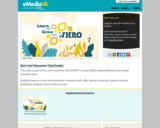
This video is part of the Learn and Grow with WHRO TV series. Watch Alystra Barefoot teach about character traits.

In this unit, students begin to grapple with the overarching question of how a person develops values, identities, and beliefs while reading the novel Shiloh. Marty, the main character in Shiloh, sees someone mistreating a dog and thinks it's his right and responsibility to step in to save the dog, even if the dog doesn't belong to him. His action raises a question for readers about when an individual should step in to take a stand against what he/she believes to be an injustice. His action also causes readers to consider how different people, depending on their values, identities and beliefs, may have different opinions on what constitutes an injustice. Students will be challenged to take a stand on both of these ideas, based on the experiences and opinions of the different characters in Shiloh. Students will also be exposed to the idea of courage, and what it means to show courage, especially in situations where you are standing up for what you believe in. It is our hope that this unit will inspire students to grapple with these questions at a deeper level and understand the power of showing courage to fight for the things they believe in, no matter what obstacles they may face.
Shiloh was chosen as the text for this unit not only because of the powerful themes, but because of the way in which Phyllis Reynolds Naylor artfully develops the setting, characters and plot. In this unit, students will be challenged to think deeply about how the details an author includes help a reader better understand a character's thoughts and actions. The setting of Shiloh in rural West Virginia in the 1970s allows students to deeply analyze how an author develops setting, and how the setting of a text influences the characters. Finally, students will begin to notice how the point of view of a story influences the way a story is told.

Students will be introduced to and practice the concept of Short A and Long A words.
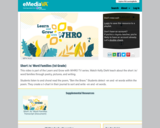
This video is part of the Learn and Grow with WHRO TV series. Watch Kelly Diehl teach about the short /e/ word families through poetry, pictures, and writing.
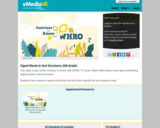
This video is part of the Continue to Know with WHRO TV series. Watch Beth Eanes teach about identifying signal words in text structures.
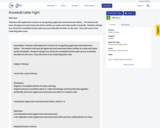
Teachers will implement a lesson on recognizing uppercase and lowercase letters. The teacher will have all uppercase and lowercase letters written on cards and rolled up like snowballs. Students will get one, throw the snowball and then pick up one to identify the letter on the card. They will move to the matching letter card.

After reviewing tips for following instructions, students will use plane figures to create a mystery image using their teacher's algorithm. Unfortunately, the teacher's directions are not very precise. Students will lend a hand by giving detailed feedback to debug and clarify the set of ordered instructions to successfully build a snowman.

English Instructional Plan – Social Media in the Workplace
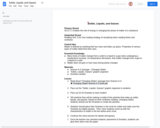
5th grade students that are learning about the phases of matter in science will read a Science A-Z book and complete an activity to show their understanding of the different phases.

Categorizing positive and negative meaning words-vocabulary
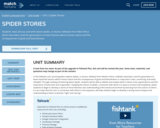
In this folktales unit, second graders explore Spider, or Anansi, folktales from Western Africa. Folktales have been used for generations to teach important lessons about human nature and the consequences of good and bad behavior in a way that is clear, convincing, and easily relatable. Through reading and learning about Spider, students will be able to debate and analyze what it means to be a good person and the importance of hard work and cooperation. Studying the actions of Spider, a character with whom it is easy to connect and empathize, allows students to begin to develop a sense of moral behavior and understanding of the world around them by learning from the actions of others. It is our hope that this unit, in connection with others in the sequence, will help students begin to develop a strong moral compass and understanding of what constitutes'right' and'wrong.'

Students will show off their computer science debugging skills, through this unplugged grammar lesson. Just like computer scientists must debug, correct, analyze or improve algorithms, students will use this same concept in helping them to edit grammatical errors in simple sentences. Using the Squash the Bugs worksheet, students will use their revision knowledge to “squash” the bugs or edit the sentences properly.